Travel First Aid Kit
I have been a Registered Nurse for over 7 years. While that doesn’t mean I know everything about every random medical question I’m asked by friends and family, it does mean that I have a pretty legit homemade travel first aid kit. My nursing skills and my travels in the wilderness and the city have given me enough experience to know what you need to have with you. Just in case.
I keep my travel first aid kit in a sturdy Ziploc, so it’s very small and packable. This isn’t the most durable, so feel free to use a small plastic box or fabric bag. The Ziploc smashes easily into my pack, adds zero weight, and I’m cheap. I change it out when it gets too tattered. I take out and add items depending on where I’m heading. It has come in handy countless times.
Whether you’re traveling deep into the Smoky Mountains or spending a week in Italy, a travel first aid kid should always be a part of your packing list.
With this said, not every kit needs to be the same. Here, I will list items that I would recommend; you can pick and choose based on your own adventures.
If you don’t feel like making your own, there are many pre-made first aid kits you can buy. These are bulkier, contain unnecessary items, and if you decide to do this, you should probably stop reading this blog (jk, I’m glad you’re here) and head over to Amazon.
Still with me? Great! Here’s everything you need for a great travel first aid kit:
Antiseptic/Alcohol wipes
I use these babies for everything. To clean scrapes, to wipe my phone off (not sure that Apple would recommend this, but think about how many germs are growing on it – gross), and I swear they make mosquito bites less itchy. They come in little sterile packages, so bring a handful and replenish from home as needed.
Gauze
A nurse couldn’t be a nurse without gauze, and you can’t have a travel first aid kit without it. It can be used to apply pressure to a wound, to soak up blood, to pack a wound, or to just use as a bandage. It’s lightweight and cheap.
Bandages
These are an obvious must. They won’t save your life, but they might help you with painful blisters and minor scrapes. Bring an assortment of sizes and re-stock as needed. I’ll keep my fingers crossed that you’re very fortunate and these are all you ever need from this kit 🙂
Moleskin
If you’re new to hiking or prone to blisters, this can feel like a life-saver. You cut it to fit around the blister, and it eases the pain.
Scissors
No, not the large, heavy kind you used to cut paper shapes as a little kid. Just get a tiny medical pair so you can cut medical supplies or for other random needs. (Like the other day when I threw a fit because my shirt tag was too itchy. I could have used these.) If they’re less than 4 inches from the pivot point, you can bring them in your carry-on luggage.
Coban or an ACE wrap
They can be used for pressure and to wrap over gauze. If the wound is bad enough, though, find a medical center.
Surgical Tape
Oh, the many uses of surgical tape. Its obvious use is for over gauze on wounds, but I’ve used this stuff to ship packages. It’s very handy to have around.
Tweezers
Helpful for splinters, getting dirt out of wounds, etc. I feel as though they’re rarely used but not very replaceable. I have used mine to remove ticks more times than splinters. Probably not necessary unless you’re in the wilderness.
Hand Sanitizer
If you need to tend to an open wound, don’t do it with dirty hands. A wound is bad. An infected one is much worse. You should also use hand sanitizer before eating, after the bathroom, etc. to prevent you from having to use some of the medications listed below.
Medicine
I carry all my pills in one small pill bottle. I wouldn’t really recommend this, but if you want to take up the least amount of space, you can risk it. TSA could potentially confiscate them if they’re not labeled. And you can potentially forget what your ibuprofen looks like when you dump a colorful array of pills into your hand.
If you’re not into keeping them all in one container, you can buy pills in travel bottles or small packaging.
Here is what I recommend you keep in your travel first aid kit at all times.
Pain relievers
Bring whatever you normally take at home. Acetaminophen or Ibuprofen would be my recommendation. But if you get migraines and always take Excedrin, bring that. These will come in handy for headaches in high elevation, aches and pains from an uncomfortable backpack, and if you are unfortunate and end up with a fever.
Anti-diarrheals
Imodium or Loperamide can really come in handy. While I don’t typically recommend anti-diarrheals (if you have a bad bacteria in you, you want to get it out), sometimes they’re necessary for long bus rides without a toilet, a tour on penguin island, etc.
I had terrible travelers diarrhea while I was in Chile. I hadn’t added this particular medication to my pill assortment yet, so I was forced to buy anti-diarrheals from a pharmacist who didn’t understand English. When I later googled what I had been taking, I found out it was only approved for dogs in some countries. Bring your own from home 🙂
Cold and allergy medicine
Hopefully you don’t end up sick while you’re on the trip of a lifetime, but I think it’s worth having some Sudafed, Benadryl, Claritin, etc. with you just in case. I use Benadryl to help me sleep sometimes too. And I took it the time I fell into a bunch of stinging nettles. If you’re feeling under the weather, the last thing you’re going to want to do is stumble to a pharmacy and try to figure out what to buy in a different language.
Antibacterial ointment
Bacitracin or Neosporin is a must for a good first aid kit. They are sold in individual tiny packages that you can throw in your pack. If you get a nasty cut, this could help prevent an infection from happening.
(Please check with your physician if you’ve never taken any of the above medications.)
Don’t forget any of the prescribed antibiotics that you take on a regular basis. Keep these in their original packaging.
This travel first aid kit should cover you for minor issues, but if anything occurs that requires medical attention, get yourself to the closest emergency room or clinic. Ideally, you should look these up and know how to get to them before embarking on your journey.
Although I haven’t offered any crazy medical advice, know that I am not a doctor or your personal physician. This is just advice from my nursing and travel experience.
Places like REI offer wilderness medical courses that can help you out with knowing what to do in emergencies that could be really helpful.
I hope that you never actually have to use your first aid kit, but at least you’ll be a little more prepared now. For other tips, check out How to Stay Healthy while Traveling – another one by me 🙂
Anything I’m forgetting? Anything you’ve added that is now a must for your kit? Share with me below!
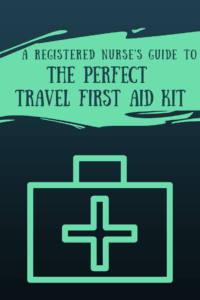
Pin this!
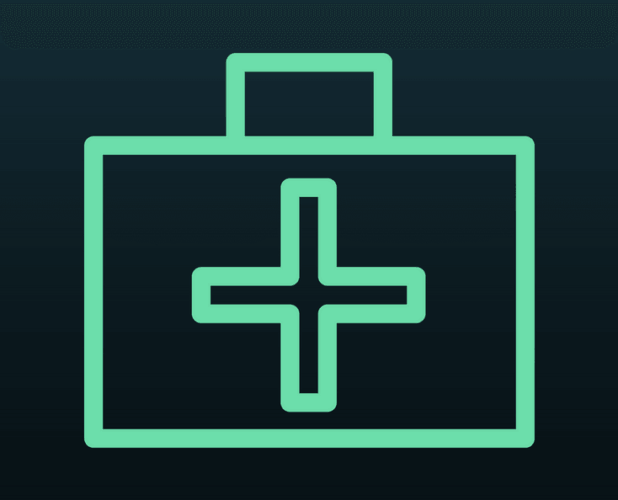
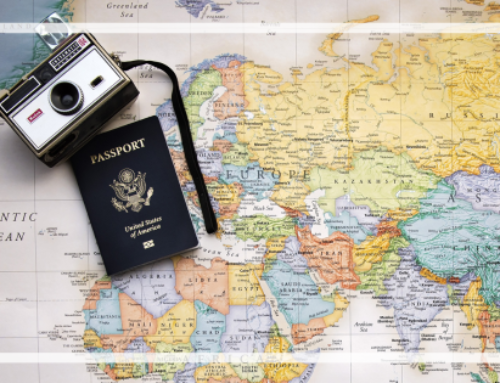


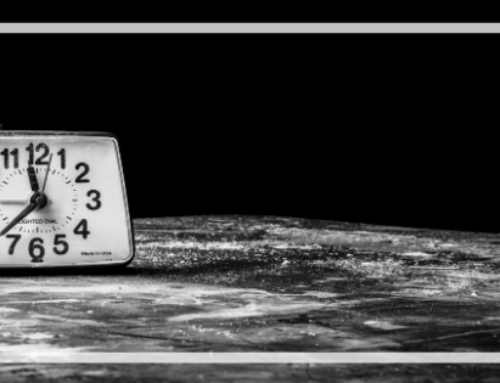
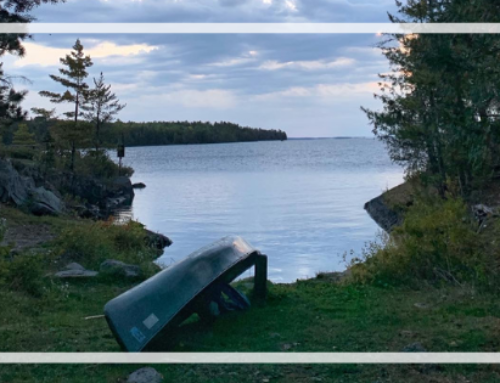
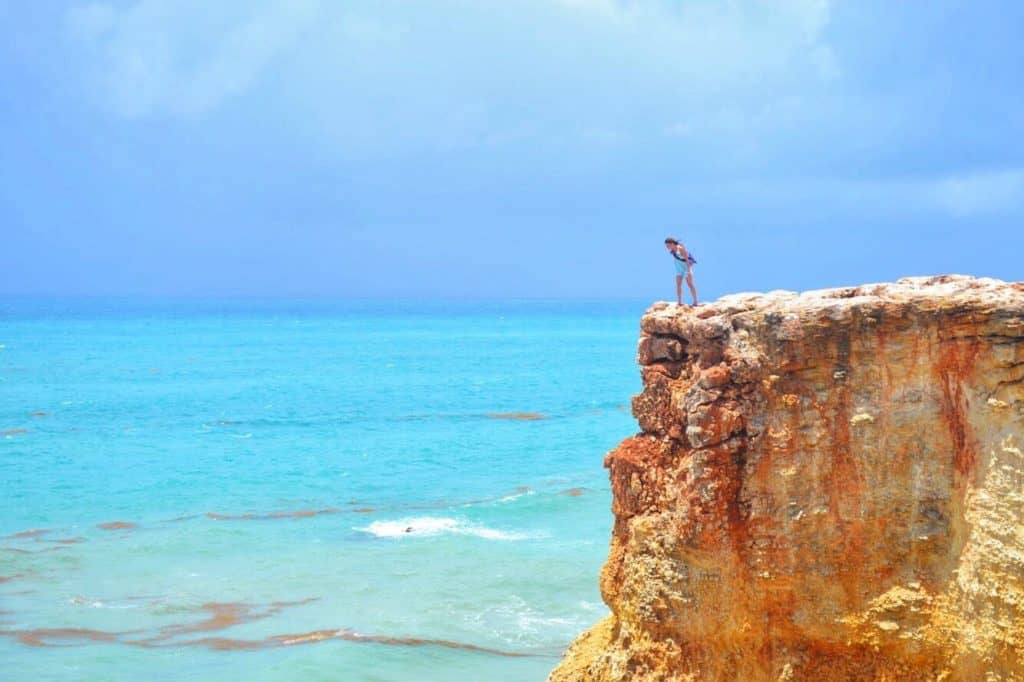
Medicine only approved for dogs in some countries! That is too much. I’m glad it didn’t cause more damage!